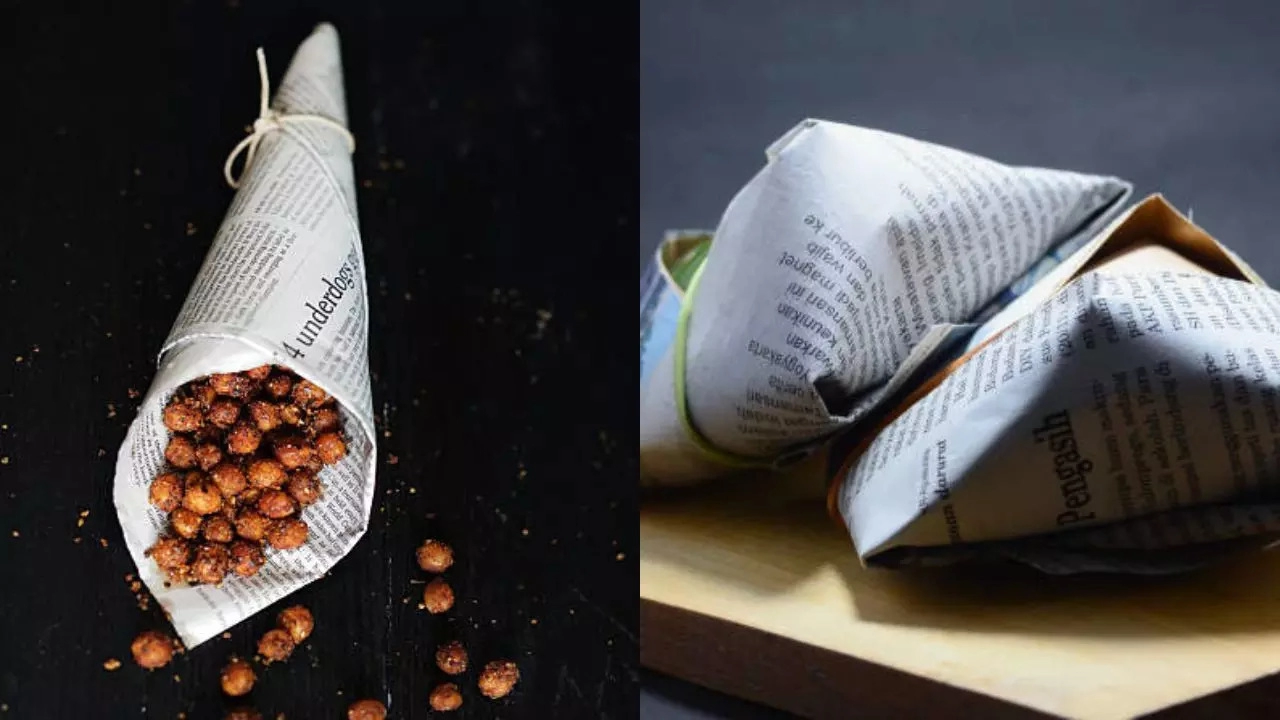Ashima Sharda Mahindra • 23 Oct 2024
Kerala Food Department Warns Against Using Newspapers For Wrapping Food; What Are Its Dangerous Health Risks?

The department has prohibited the use of newspapers for wrapping snacks due to concerns that it leads to quicker contamination of food with harmful chemicals
The Kerala Food Safety Department has directed that food items – like samosa, peanuts, or fritters, should only be packaged using food-grade packing materials and not the widely popular newspapers. In a notification, the department has prohibited the use of newspapers for wrapping fried snacks due to concerns that it leads to quicker contamination of food with harmful chemicals – like lead and ink. The use of effective packaging will ensure that there is no alteration in the composition of the food.
According to the Food Safety Assistant Commissioner, the department notification emphasizes that food entrepreneurs should strictly adhere to the guidelines regarding packaging materials and participate in the food safety process.
What are the health hazards of using newspapers for wrapping?
Experts say, even though street food culture brings in a vibrant and congenial environment for local businesses and has an important role in preserving food heritage – it also spreads various illnesses.
It is important to adopt hygienic practices and ensure food safety while handling food. Most street foods, popular among teenagers and children, carry potential health risks from the ink in the newspaper and have a detrimental impact in the growing-up years.
Also, doctors say the cumulative buildup of dust and contamination in newspapers makes it a home for all kinds of pathogens—viruses, bacteria, and fungi – spreading E. Coli infection which leads to dangerous symptoms like:
- Diarrhoea
- Vomiting and nausea
- Fever
- Gastric issues
- Severe stomachache
Ink toxicity
Also, newspaper ink can have a significant impact on human health - specifically the potential for lead toxicity. These chemicals, if they come in contact with food make it unsafe for consumption. According to doctors, newspaper ink is packed with chemical extracts and organic solvents like di-isobutyl phthalate, ethanol, dimethyl sulfoxide (DMSO), dibutyl phthalate, and propanol.
It also has heavy metals like cadmium, mercury, lead, and chromium, which can trigger toxicological effects – causing dangerous issues like:
- Neurotoxicity
- Cardiovascular or heart diseases
- Kidney diseases
- Weak bones
- Liver damage
- Lung damage
Safer alternatives you can try
To make the food hygienic and safer for consumption, make sure you always eat from vendors who use suitable packaging material that is environmentally friendly and does not pose a health risk:
- Insulated containers for food items like soups and stews to reduce bacterial contamination
- Make sure to eat from vendors who serve food in materials like stainless steel, dry leaves, or glass vessels instead
- Always fresh fruits and vegetables under running water before consuming and packing them in containers
- Packaging materials like paper, plastic bags, food wraps, and aluminium foil should not be re-used to avoid cross-contamination.
Get Latest News Live on Times Now along with Breaking News and Top Headlines from Health and around the world.